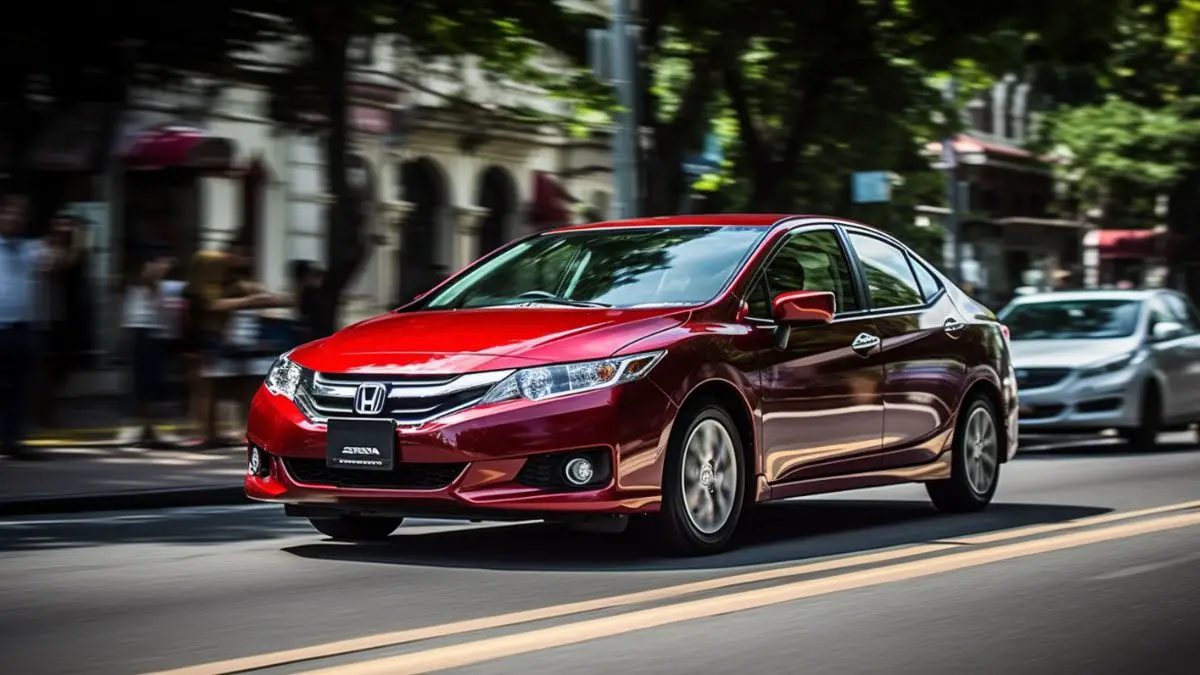As you pop open your car’s hood to perform a routine check-up on your vehicle, you notice something peculiar in the coolant. The once clear and transparent coolant has now transformed into a vivid shade of red. Now, you may wonder, “Why is my coolant red?”
Various factors can cause coolant to turn red. One common cause is using red coolant in your vehicle, which is common in newer models. Another cause could be rust and corrosion within the cooling system, which can cause the coolant to turn reddish.
Additionally, if engine oil has contaminated the coolant, it can cause it to turn red. In this article, we will explore why coolant sometimes appears to be red. We will also discuss how to diagnose and fix issues with red coolant, among other related topics.
The Importance Of The Proper Balance Of Coolant In The Cooling System
A vehicle’s cooling system works by circulating coolant throughout the engine. Coolant is typically a 50/50 mixture of water and ethylene glycol-based antifreeze.

This mixture is designed to maintain a specific boiling point and freezing point. It also protects against rust and corrosion. If the coolant mixture becomes too diluted or concentrated, it can negatively impact the cooling system’s ability to regulate temperature.
That said, here is why cooling system balance is crucial:
Heat Transfer
Coolant carries heat away from the engine and dissipates it through the radiator. If the coolant level is low, there won’t be enough fluid to absorb the heat, leading to overheating and potential engine damage.
Corrosion Protection
Coolant contains additives that prevent corrosion and rust from forming in the engine and radiator. Without the proper balance of coolant, the engine parts may become corroded, leading to reduced performance and potential failure.
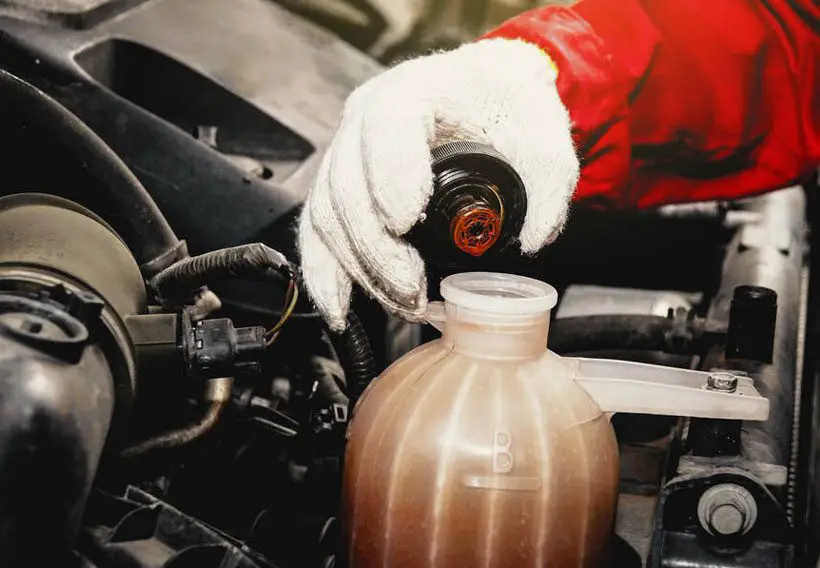
Freezing Protection
In colder temperatures, coolant prevents the engine and radiator from freezing. If the coolant level is low, the engine may freeze, leading to expensive repairs.
What Are The Common Causes Of Red Coolant?
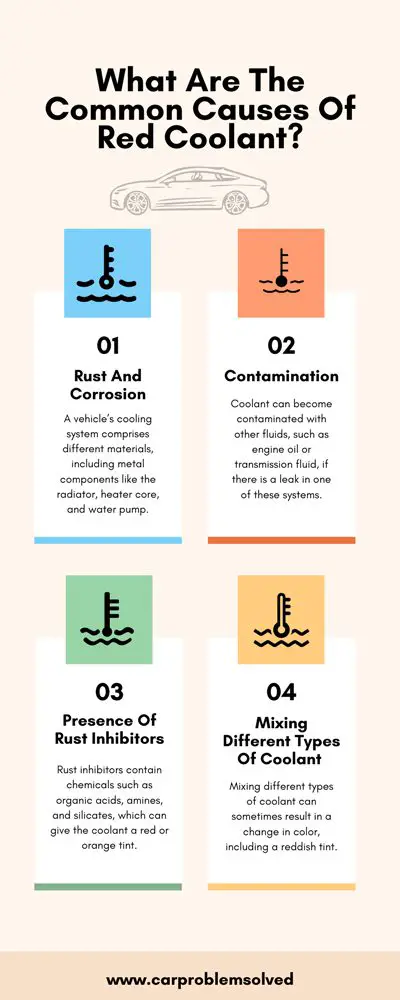
Here are several reasons why your coolant may appear red. Here are some of the most common causes:
Rust And Corrosion
A vehicle’s cooling system comprises different materials, including metal components like the radiator, heater core, and water pump. Over time, these metal parts can corrode and rust, forming rust particles in the coolant.
Contamination
Coolant can become contaminated with other fluids, such as engine oil or transmission fluid, if there is a leak in one of these systems. When these fluids mix with the coolant, it can turn the coolant red in color.
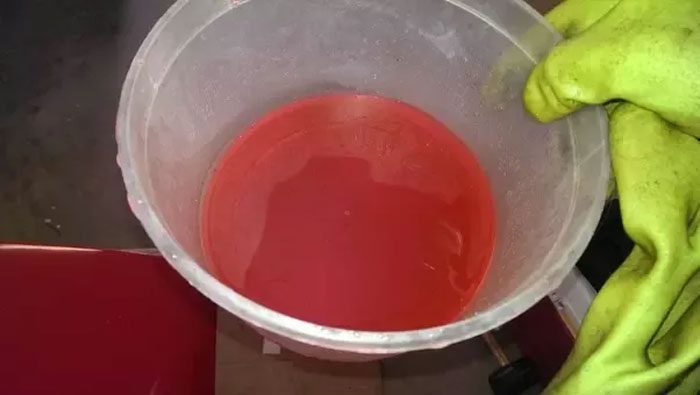
Presence Of Rust Inhibitors
Rust inhibitors contain chemicals such as organic acids, amines, and silicates, which can give the coolant a red or orange tint. Therefore, note that the red color of the coolant does not necessarily indicate a problem with the cooling system. It could be a typical characteristic of some coolant formulations.
However, if the red color is accompanied by other symptoms, such as a sweet smell, low coolant levels, or overheating, it could indicate a more significant issue with the cooling system.
Mixing Different Types Of Coolant
Mixing different types of coolant can sometimes result in a change in color, including a reddish tint. This can occur because different types of coolant may have different dye colors, which can combine to create a new color when mixed.
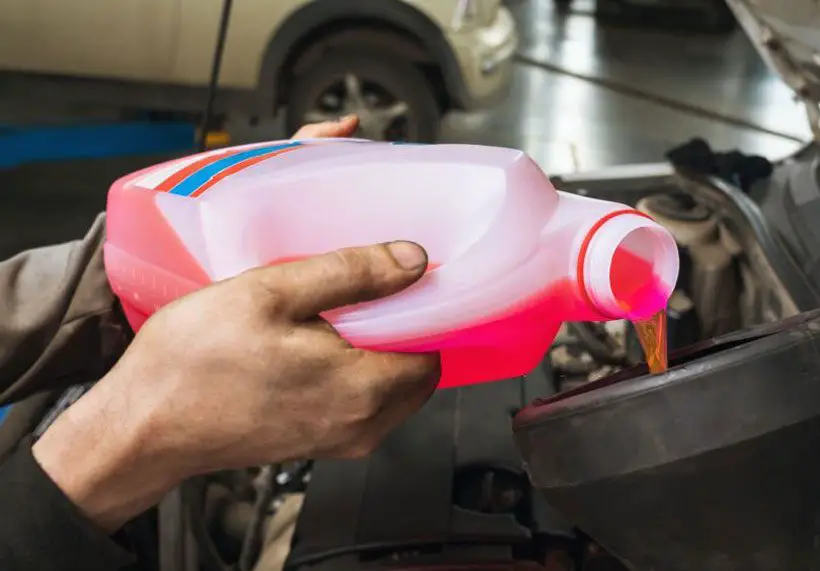
Additionally, mixing different types of coolant can result in a chemical reaction that can cause the coolant to change color. It’s important to note that mixing different types of coolant is generally not recommended.
How To Diagnose Red Coolant?
If you notice that your vehicle’s coolant is red, it could indicate a problem. Here are the steps to take to diagnose the red coolant:
- Check the type of coolant: Coolant is typically dyed a specific color to help identify the type of coolant and to detect any leaks or contamination.

That said, there is a different type of coolant that is specifically designed to be red. Check your owner’s manual or consult a professional to determine if your vehicle is supposed to have red coolant.
- Check for rust inhibitors: Rust inhibitors prevent rust and corrosion from developing in the cooling system. The first step is to check the label on your coolant to see if it contains rust inhibitors.
Most modern coolants include these additives, but double-checking is always best. You can also test the coolant using a coolant test kit to measure the pH level of the coolant. A pH level of 7 or above indicates that the coolant contains rust inhibitors.
- Inspect the coolant reservoir: Take a look at the coolant reservoir to see if there are any visible signs of contamination. If the coolant has turned red and particles or other debris are in the reservoir, it could be a sign of a more significant issue.
Solutions For Addressing Red Coolant?

Once you have identified the cause of your red coolant, you can take steps to fix the issue. Here are some solutions to consider:
Flushing And Replacing The Coolant
If the red color of the coolant is due to rust and corrosion in the cooling system, it’s essential to have the system flushed. Here is how to do it:
Step 1: Locate the radiator drain valve
This is typically located at the bottom of the radiator. Place the container under the valve.
Step 2: Drain the old coolant
Open the radiator drain valve and allow the old coolant to drain into the container. Once it has finished draining, close the valve.
Step 3: Add flush solution
If you’re using a flush solution, follow the instructions on the bottle to add it to the radiator. Run the engine for the recommended time (usually 10-15 minutes).
Step 4: Drain the flush solution
Open the radiator drain valve again and let the flush solution drain into the container. Close the valve once it’s finished draining.
Step 5: Refill with new coolant
Refill the radiator with new coolant using a funnel until it reaches the recommended level. Check the owner’s manual for the correct type and amount of coolant. Ensure you flush the coolant every two to three years.
Use The Right Coolant
After flushing the coolant, replace it with your car’s recommended coolant. If you are unsure of the type of coolant in your vehicle, consult your owner’s manual or a qualified mechanic to determine the correct type of coolant to use.
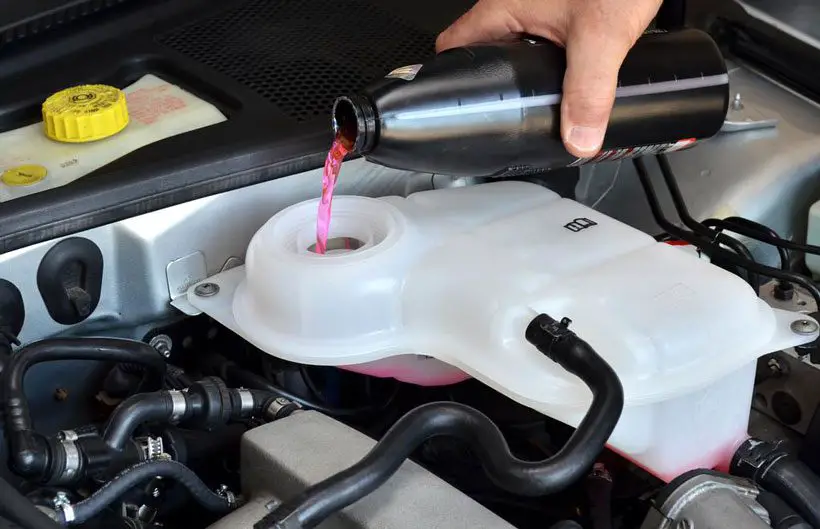
Replace Any Rusted Or Corroded Parts
It’s essential to clean or replace other parts contributing to the rust. These parts may include hoses, the radiator, the heater core, and the water pump. If the severity of the rust is not too much, clean the part rather than replace it.
Repairing Leaks
If there’s a leak in your vehicle’s cooling system, it needs to be repaired promptly. Depending on the location and severity of the leak, the repair may involve replacing a hose, radiator, or water pump. Also, fix engine or transmission leaks to prevent the oil from mixing with the coolant.
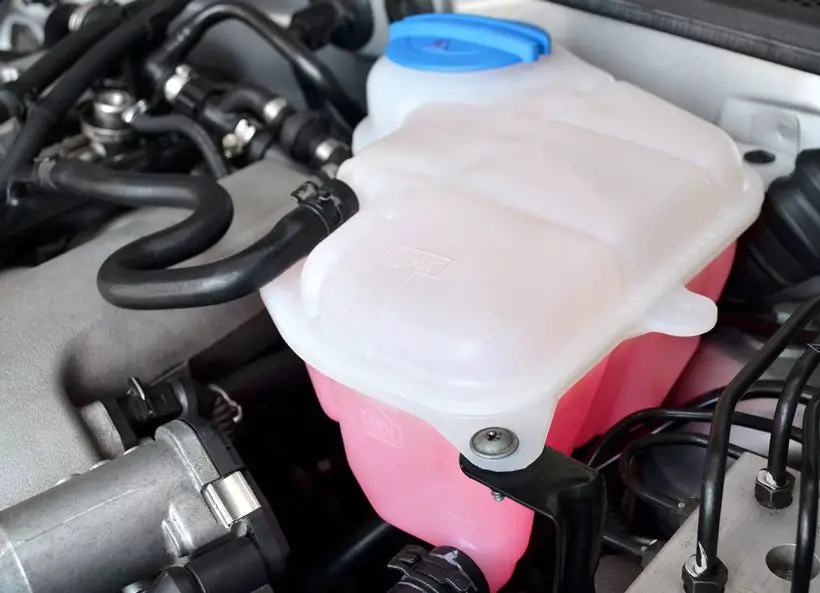
Removing Rust Inhibitors
To remove rust inhibitors from the cooling system, follow the abovementioned steps for flushing the coolant. However, use a rust inhibitor removal solution instead of a flushing solution. This solution is designed to break down and dissolve the rust inhibitors, allowing them to be drained from the system.
Once the system has been flushed, you must add fresh coolant that does not contain rust inhibitors.
Note: Only remove rust inhibitors if other warning signs, such as overheating, accompany the red coolant. This is because rust inhibitors help prevent corrosion and further damage to the cooling system. Therefore, removing them can leave your engine vulnerable to damage.
Preventive Maintenance Tips For Avoiding Coolant-Related Problems

Here are some tips for maintaining your coolant system and avoiding coolant-related problems:
Regular Maintenance
Regular vehicle maintenance is essential for keeping it in good working condition and avoiding potential problems. The hoses and belts in your coolant system can wear out and crack over time.
Inspect them regularly for signs of wear and tear. Look for cracks, leaks, or bulges in the hoses, and check for fraying or cracking in the belts. If you notice any of these issues, have them replaced immediately to avoid coolant leaks and engine damage.
Also, check the radiator cap regularly for signs of damage, and replace it if necessary. If the cap is damaged or not functioning correctly, it can cause coolant loss and overheating.
Coolant System Checks
One of the most crucial steps in maintaining your coolant system is checking the coolant level regularly. Low coolant levels can cause your engine to overheat and result in costly repairs.
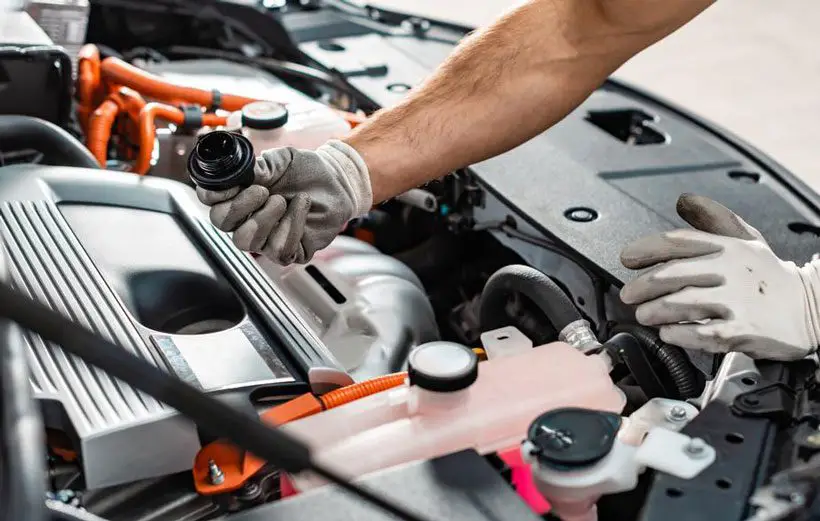
To check the coolant level, wait for the engine to cool down, locate the coolant reservoir and check the level. If it is low, add the coolant to the recommended level.
Replace The Coolant Regularly
The recommended interval for coolant replacement varies by vehicle make and model, so consult your owner’s manual for specific recommendations. In general, the coolant should be replaced every 2-5 years.
Monitoring Temperature Gauge
This can provide essential insights into the health of your coolant system. If the temperature gauge reads higher than usual, it could indicate a problem with your coolant system. Various factors, such as low coolant levels, a malfunctioning thermostat, or a blocked radiator, could cause this.
If you’re experiencing red coolant in your car and are concerned about car engine overheating, our articles on causes of car engine overheating and car overheating then going back to normal can provide you with helpful information. The causes of car engine overheating article explores various factors that can contribute to engine overheating, including issues with the cooling system, radiator, thermostat, and more. Meanwhile, the article on car overheating then going back to normal delves into the possible reasons behind intermittent overheating episodes and offers insights on how to address this concern.Conclusion
If you notice that your coolant is red, it’s essential to diagnose the issue as soon as possible to prevent any potential damage to your engine. The red may be due to rust inhibitors, contamination, or other factors. However, you should not be worried if your car uses a red-colored coolant.
After understanding the causes of red coolant, follow the solutions provided in the article to ensure you resolve the issue. Regular maintenance and following the manufacturer’s recommendations for coolant type and ratio can help prevent red coolant problems and extend your vehicle’s life.
